 Character grouping and gradation is one of the more arcane and least understood (never mind being taught) aspects of novel composition. For me, the primary source on this is E. K. Brown‘s essay “Phrase, Character, Incident” in his book Rhythm in the Novel. Brown was a Canadian academic and critic with a bent toward formalism, but he died rather young, before he could make as large an impact as he might have. His book is out of print, and it shouldn’t be. See my book The Enamoured Knight (pp. 128-131) for a succinct outline of the structure. “By character grouping I mean the composition of characters based on shared traits; these traits are varied, diminished or intensified from one character to another, that is, they are graded. Another way of saying this is to remember how Madariaga thought of Sancho as the same as Quixote only transposed into a different key.”
Character grouping and gradation is one of the more arcane and least understood (never mind being taught) aspects of novel composition. For me, the primary source on this is E. K. Brown‘s essay “Phrase, Character, Incident” in his book Rhythm in the Novel. Brown was a Canadian academic and critic with a bent toward formalism, but he died rather young, before he could make as large an impact as he might have. His book is out of print, and it shouldn’t be. See my book The Enamoured Knight (pp. 128-131) for a succinct outline of the structure. “By character grouping I mean the composition of characters based on shared traits; these traits are varied, diminished or intensified from one character to another, that is, they are graded. Another way of saying this is to remember how Madariaga thought of Sancho as the same as Quixote only transposed into a different key.”
Vanessa Blakeslee is a former student of mine, a graduate of Vermont College of Fine Arts. She does a fine job here of analyzing character grouping and gradation in the structure of three contemporary novels. Vanessa’s fiction and poetry have appeared recently in The Southern Review, Green Mountains Review, New York Quarterly, The Bellingham Review, Southern Poetry Review, among others. She has received grants and fellowships from Yaddo, Ragdale, the Virginia Center for the Creative Arts, the Writers’ Colony at Dairy Hollow, and the United Arts of Central Florida. She directs Maitland Poets & Writers, a community organization which focuses on expanding the literary arts throughout Central Florida.
dg
Shades and Mirrors: Character Gradation as a Demand of Resonance in the Novel
By Vanessa Blakeslee
In my early twenties, I embarked on my first attempt at writing a novel. Loosely based on events passed down in family history, the work sprawled across several generations of Italian-American women as they struggled to overcome the trials of love and death. Key word to note: “sprawled.” As an inexperienced writer of long fiction, I sensed that what my characters suffered from most (outside of the sick husbands and dying babies on the page) were composition flaws. Workshop feedback repeatedly struck the same chord: often my female characters seemed like the same person. I gave each of the daughters distinguishing characteristics, one a love for music, the other for business and career, yet somehow these differences failed to establish sufficient motivation for subplot, unity and resonance to develop. To make matters worse, the large cast of secondary characters was comprised of relatives who seemed to pop in and out of the story at random. After much teeth-gritting, I stowed the several hundred page draft away. I simply lacked the craft technique to approach fixing the mess.
Not until I was a student in the MFA in Writing at Vermont College did my interest in the novel’s architecture resurface. One of my teachers, Douglas Glover, pointed me to an essay by Yeats, “The Emotion of Multitude.” He also suggested a somewhat hard-to-find but indispensable gem of a book, E.K. Brown’s Rhythm in the Novel, and a concept Brown refers to as “character gradation.”[1] According to Brown, graded characters share traits, attitudes or experiences with other characters to varying degrees, thereby composing structural parallels in a narrative. Such structural parallels lead to the creation of the echo effect in a novel; without the parallels and repetition in place, the narrative turns to sprawl. I found a used copy of the book online and ordered a contemporary novel Glover recommended for the study of subplots, Anne Tyler’s The Accidental Tourist. I added to my list Glover’s own study of Don Quixote, The Enamoured Knight. The following semester my advisor Xu Xi suggested novels by V. S. Naipaul and Muriel Spark might make worthwhile subplot-studies as well. Books piled high, I began with Brown. Almost immediately my long forgotten novel draft came to mind as I hunted after the question: how does the relationship between structural parallels and the desired echo effect of resonance in a novel work exactly?
Resonance derived from an echo effect has been well-explored territory for other writers. W. B. Yeats called the effect of subplotting “the emotion of multitude” in his essay on King Lear:
The Shakespearian drama gets the emotion of multitude out of the subplot which copies the main plot, much as a shadow upon the wall copies one’s body in the firelight…Lear’s shadow is in Gloucester, who also has ungrateful children, and the mind goes on imagining shadows, shadow beyond shadow, till it has pictured the world. In Hamlet, one hardly notices, so subtly is the web woven, that the murder of Hamlet’s father and the sorrow of Hamlet are shadowed in the lives of Fortinbras and Ophelia and Laertes, whose father, too, have been killed.[2]
“Mirroring” may be a better term for how a subplot relates to the main plot, for in a mirror people and objects reflect but can appear slightly sharper. Notice that in order to achieve “the emotion of multitude” Shakespeare uses other family members or two different family groups along plot/subplot lines who then may interact and observe one another and achieve the mirroring effect. And it is this mirroring within the plot-subplot relationship that creates the echo effect because subplot allows for multiple sets of characters who share situations and traits to interact with the main plot, adding sub-stories while keeping the long narrative from sprawling.
To better pinpoint how my sprawling multi-generational novel went wrong, I took a close look at the three novels mentioned above: The Accidental Tourist by Anne Tyler, A House for Mr. Biswas by V. S. Naipaul, and The Prime of Miss Jean Brodie by Muriel Spark. The former two titles use family dynamics in the character gradation and subplotting to achieve resonance while the latter uses a group of schoolgirls, but the gradation works the same way.
In these novels, the characters involved in the subplots that are closely related to the main set of characters (often as other family members) contain an element of gradation. Subplot characters often mirror larger characters acting on the main plot, but can be less ardently subjected to their desires. The author may give the subplot characters the same or a similar core trait as their counterparts but “shade” its intensity, which helps push the subplot characters toward an outcome which differs from that of the main plot. As the characters of the main plot and subplot(s) interact with one another, this gradation becomes a key factor in the development of thematic complexity and resonance.
I prefer to think of the concept as “shading” and borrow from the world of visual art, perhaps because I tend to picture the novel as a grand scene akin to Renoir’s Bal du Moulin de la Galette, Montmartre with characters inhabiting the foreground, the center and the background. If we take a close look at these novels and trace the textual paths and tie-ins, we can better understand why the writers make the compositional choices that they do for their characters.
To accurately trace how a writer accomplishes character gradation or shading in a narrative and because the subplot characters are so closely related to the main plot characters, it’s important to find exactly where the subplot cuts into the main plot and out again, the points where the plot weaving occurs. Only then will the writer’s techniques of “character doubling and splitting” stand out clearly. In The Enamoured Knight, Douglas Glover explains how Cervantes uses character doubling and splitting in Don Quixote:
Note how clear it is that such structures (subplots, groups of characters, and develop through a simple doubling or splitting process. Characters in novels replicate by cell division. They split off a semblance of themselves with various characteristics shaded differently, either exaggerated or diminished. Thus the curate and the barber are a pair, though one is clearly more educated and more officially significant. The two of them spawn a younger, more energetic version of themselves in the person of Sampson Carrasco. Don Quixote spawns Sancho, an illiterate, tubbier, plain-speaking version of himself… [3]
Character gradation and “shading” ranges from a more complex system of parallel structures in lengthier works, such as in Don Quixote, above, or A House for Mr. Biswas which I will examine later. For a more basic plot-subplot-lesser plot structure using shaded family members, Anne Tyler’s novel The Accidental Tourist makes an excellent example.
The main plot of Tyler’s novel is Macon Leary’s relationship with the dog trainer, Muriel. On the heels of a separation with his wife, Sarah, every step Macon takes is in the direction of reclusive self-preservation, seeking and keeping his creature comforts. Macon’s sister, Rose, has similar neuroses about tidiness but also a desire for romance and so embarks on a relationship with Julian. So the Rose-Julian subplot mirrors the main love plot between Macon and Muriel. Both Macon and Rose share similar traits and attitudes—obsession with household order and wariness of strangers—but Rose’s homebody tendencies are even more pronounced than Macon’s. At the end of the novel, Rose is still somewhat stuck, having returned to her marriage but repeating the same caretaking routine, while Macon has broken free. Julian, the complete opposite of Macon and a cheerful, ready adapter must take on Leary family behaviors to compensate for Rose’s failure to leave the Leary brothers, Porter and Charles. A lesser plot also develops between Macon and the brothers, who are so stuck in their “Leary” family ways that they are incapable of change. As Macon and Rose find themselves in similar romantic situations, their differences place them more at odds with one another as each character’s plotline moves forward; so, too, does Macon run into more conflict with his stagnant Leary brothers as he heads in the opposite direction, and his attitude shifts from security toward spontaneity.
Tyler plants the seeds of variation in the first scenes depicting Macon and his family by comparing and contrasting characters with one another. Often one brief stroke containing a distinguishing feature is enough to shade a character and set him apart from the others in a particular way. A writer may shade an entire set of characters with an overarching common trait in a line or two. One of the first lines introducing Rose links all four Leary siblings together. “Rose had a kitchen that was so completely alphabetized, you’d find the allspice next to the ant poison. She was a fine one to talk about the Leary men.”[4] The scene gives a brief introduction to what Macon’s family is like on the whole, just enough for the reader to understand that they all share a defining trait: obsession with planning and dutiful order.
Tyler develops Macon’s character with her frequent use of doubling. Macon and his boss, Julian get described and contrasted together. The contrast in their traits creates opposition and places the characters on different plot trajectories and also functions as a continual reminder of Macon’s distinguishing characteristics and worldview: “Julian was younger than Macon and brasher, breezier, not a serious man.”[5] So the reader recognizes the two as opposites; Macon looks down on whimsy and boldness. The development of Macon’s character using doubling and contrast sets Julian on a criss-cross pattern with Macon’s main plot. As Macon moves away from his passive, worried nature to explore the world, Julian forgoes his breezy life of singlehood for home cooked meals and board games with the Leary family. This pattern is a direct effect of character shading and doubling.
With the Macon’s sister Rose, the most noticeable difference that plays an integral part in her plot with Julian is her devotion to soap operas. “While she watched, she talked aloud to the characters….’Just you wait. Ha!’—not at all her usual style of speech. A commercial broke in, but Rose stayed transfixed where she was.”[6] The phrase “her usual style of speech” refers to the Leary’s penchant for proper grammar demonstrated throughout the narrative; here Rose abandons this group attitude. Her yearning for romance sets her apart from her brothers and motivates her decision to marry Julian. Another difference which plays a factor in Rose’s subplot is that she gets lost outside of the Leary neighborhood. All the Leary siblings share this tendency—of the four, Macon is the most able to locate his surroundings, Rose the least. This intensity of shading leads Rose to a different outcome from that of Macon; getting lost in her new neighborhood is one of the reasons Rose moves back in with her brothers after her marriage. So shading plays a major role in pushing the subplot forward.
As the plots progress, we can trace the steps of the characters to the shading of their core traits and attitudes and observe how the structural parallels result in resonance.
The Rose/Julian subplot unfolds alongside the Macon/Muriel main plot, but the characters go about achieving their desires in different ways based on their shaded traits. Muriel pursues Macon but he gives in only when pressed, whereas Rose freely reciprocates Julian’s interest. This contrast develops as the subplot cuts in to mirror the main plot. When Muriel asks Macon to a movie or dinner, he backs away. This is completely opposite Rose’s speech and action in the Thanksgiving dinner scene:
‘You want to drive him off! You three wasted your chances and now you want me to waste mine, but I won’t do it. I can see what’s what. Just listen to any song on the radio; look at any soap opera. Love is what it’s all about. On soap operas everything revolves around love. A new person comes to town and right away the question is, who’s he going to love? Who’s going to love him back? Who’ll lose her mind with jealousy? Who’s going to ruin her life? And you want to make me miss it!’[7]
So Macon runs away from love while Rose runs toward it. Meaning arises out of juxtaposition and repetition with variation as this plot/subplot pattern reappears in the knitting scene. While Macon’s doubts and overprotective habits cause him to reject Julian’s different manners, Rose’s romantic streak trumps her be-wary-of-strangers upbringing to fall in love with Julian (and it’s worth noting that Julian and Muriel share similarities: stylish clothing, boldness and a positive outlook on life that drives opposition and conflict as they interact with the Learys). Rose’s disapproval of Muriel creates a parallel to Macon’s contempt for Julian, although her reasons differ: Muriel speaks sloppy English, she’s disorganized and erratic. Yet the core trait from which the disapproval stems is the same—don’t trust others. This theme emerges from the parallel structure and shading.
In the end, Macon chooses a life with Muriel because the Leary traits Tyler gives to Macon do not contain the same severity of shading as the rest of his siblings; he has changed and become more like Julian. And Rose, while she does not change, is able to return to her marriage and achieve companionship as a result of the one striking feature which separates her from the brothers—her desire for romance as a result of her devoted soap opera-watching. Her transformation is not as successful as Macon’s, but her situation has changed by her opening up to find love outside Leary walls.
Why are the family parallels so significant here, namely those involving Rose and Macon? For one, isolated neuroses would likely not supply any particular insight to Macon’s character. Without the mirror of his family, the deeper picture of Macon is blurry: what’s the context in which his personality and desires are rooted? Because Macon’s desire is the offspring of his traits and quirks, his shading causes the main plot to take the one-step-forward-two-steps-back shape that it does. Now his personality foibles could be illustrated through further sub-stories and subplots about his work, his relationship with Julian, or a neighbor, perhaps—but then the theme changes entirely. The novel would cease to be about the insular nature of family. So the structural parallels directly inform the greater purpose of the work. The larger meaning of Tyler’s novel is about the individual’s wandering away from home and into the world to find out who he really is; hence, Macon and Rose are “the accidental tourists.” That tension of the self torn between family and the outside demands the structural parallel of the character shading among family members. Otherwise, titling the work “The Accidental Tourist” wouldn’t fit the purpose—or the purpose of the title would have to mean something else.
And because longer narratives must deal with scope in a way that short stories do not, structural cohesion is vital to achieve scope (and avoid sprawl). The structural parallels mirrored in the Macon/Muriel plot and Rose/Julian subplot can be traced back to the spawning and shading of characters and the groups to which the varying traits belong: the “stuffy” Leary group: Macon, Rose, Porter and Charles, spawned from the grandparents at odds with the “fun” group spawned from their mother, Alicia: Muriel, Julian, and to lesser degree, Sarah. So the character gradation and shading cause repetition with variation between the outcomes of the main plot and subplot; the mirroring of the plotlines creates the structural cohesion necessary to build scope and unique thematic complexity. The Accidental Tourist is much more than Macon falling in love with his dog trainer; the effect of Tyler’s mirroring is that the main story along with the sub-stories woven together resonates with mysteriousness and meaning. By venturing beyond home, Macon Leary finds his true self.
V.S. Naipaul’s A House for Mr. Biswas is also about family, and the 564 page novel is rife with parallel structures on a much grander scale than Tyler’s. The protagonist, Mr. Biswas, wants a house of his own and a life away from his in-laws, the Tulsis, and this Tulsi opposition reaches across the extended family with the techniques of character shading and sub-grouping. The Tulsi brothers-in-law are all different versions of Mr. Biswas. This distinct shading allows for each brother-in-law to share similar circumstance with Mr. Biswas (brothers-in-law living under Tulsi rule) but each has a different trajectory and outcome. Because the traits shared by Mr. Biswas and his spawned doubles vary in intensity, the shading and character grouping spurs conflict and pushes the narrative action forward. Mr. Biswas spawns another double in his son, Anand and a subplot is born from their common desire for reading and learning. In Part Two of the novel, the main plot and subplot come together with the Biswas/Tuttle/Govind family rivalry. In the tradition of the upstairs/downstairs novel, Anand and his cousin Vidiadhar have a competitive little plot that mirrors the conflict going on between their fathers. The greater breadth in narrative scope increases the demand for structural cohesion; this provides more opportunity for subtle difference in character shading. Naipaul’s novel achieves reverberating wholeness as a result.
I counted over a dozen spawned character doubles that could be isolated to make this argument, but for purpose of this essay, have chosen to cite and analyze the primary one, the shaded versions of Mr. Biswas.
One variation of Mr. Biswas occurs with Govind, Chinta’s “eager, loyal” husband. The mirror between Govind’s subplot and the main plot of Mr. Biswas develops to a greater extent from the stark differences between the two men; they share little beyond the common in-law situation. “Mr. Biswas thought of Govind as a fellow sufferer, but one who had surrendered to the Tulsis and been degraded. He had forgotten his own reputation as a buffoon and troublemaker, however, and found Govind wary of his approaches.”[8] Good-looking but non-intellectual Govind does manual plantation work, gets nervous and allows Seth to control him, then behaves obnoxiously when Seth exits. He is a variation of Mr. Biswas shaded with intimidation and cowardice, a darker, Jekyll-and-Hyde portrayal. Because of their opposite attitudes in facing the same situation, the lesser Govind plot takes on a contrasting trajectory and cuts into the main plot at the Shorthills house where he becomes “increasingly surly.”
The episode at Shorthills house is also the point in the narrative in which W.C. Tuttle and his family appear. Tuttle is yet another shaded version of Biswas who picks up some pious traits from the now deceased brother-in-law Hari and also the scheming Govind; he prays regularly and reads but Biswas labels Tuttle’s books “trash.” Yet Tuttle resembles Mr. Biswas more than any of the other brothers-in-law, such as when both men order bookshelves to be made at the same time, because both men actively pursue their desires. Tuttle’s desire to acquire a house of his own is identical to that of Biswas but not as urgent. Tuttle does not possess the same degree of obsession about his desire as his main plot counterpart; he is “Biswas Lite” if you will. So the main plot and the Tuttle subplot do not share the same outcome, although Tuttle comes closer than any of the other brothers-in-law to escape from the Tulsis.
The more alternate outcomes achieved as a result of the various Biswas doubles and subplots, the more echoes are created and the greater the resonance of the novel. Naipaul weaves all three plots together, adding more mirrors to the main plot of Mr. Biswas. In places, Naipaul describes all three men together and contrasts arise from this triple juxtaposition. The effect is a “piling on” of differences, opposition, a spike in dramatic tension:
…he (Biswas) continued to plunder, enjoying the feeling that in the midst of chaos he was calmly going about his own devilish plans. Then the news of the ravages of W.C. Tuttle and Govind was whispered through the house. W. C. Tuttle had been selling whole cedar trees. Govind had been selling lorry loads of oranges and papaws and avocado pears and limes and grapefruit and cocoa and tonka beans. Mr. Biswas felt exceedingly foolish next morning when he dropped half a dozen oranges into his bag.[9]
The difference in shading among Biswas and his two counterparts, Tuttle and Govind is revealed with the technique of side-by-side description of each man’s action in the same situation. The juxtaposition illustrates that Biswas does not share the same acute ability to deceive (though he thought he did). Govind and Tuttle are more aggressive than Biswas in their actions and conflict arises from the different shades in character. Tuttle and Govind race ahead while Biswas remains stuck, still sticking his oranges into his bag to peddle in town.
But the technique of describing characters together to heighten the different shades works in the same way to heighten focus on their sameness as in this paragraph juxtaposing only Tuttle and Biswas. Govind has been left out which in itself increases the “sameness” in the shading of the other two.
And when it was learned that some of the widows’ sons had killed a sheep, roasted it in the woods and eaten it, W. C. Tuttle expressed his outrage at this un-Hindu act, refused to eat any more from the common kitchen and made his wife
cook separately. One of his sons reported that W. C. Tuttle’s Brahmin mouth had burst into sores the day the sheep was eaten. Mr. Biswas, though unable to produce W. C. Tuttle’s spectacular symptoms, made Shama cook separately as well.[10]
This comparison helps to place the “sameness” of Tuttle and Mr. Biswas in a special light. In this paragraph, the main plot of Mr. Biswas and subplot of Tuttle come together in the description of the two men. The repetition of their situation, their desires and anti-Tulsi attitudes (with the slight variation in the mouth sore incident) continues to build unity and resonance through parallel structure.
How are these precise structural parallels important in A House for Mr. Biswas, and to what extent are they important to novels in general? Again the matter of meaning and scope requires a closer look. Like Tyler’s novel, Naipaul’s concerns family. Through the duplication of parallels the problems involve not just a single family, but numerous families. But the scope of “the family problem” and the nature of the situation itself, independence from domineering relations and individual freedom, are different than Tyler’s. And here the thematic meaning does not only apply to severalfamilies but to an entire society of Trinidad as a result of the more extensive network of shades and mirrors. Perhaps because the novel revolves so definitely about a specific place, an island set apart from the rest of the world, this determines the need for a wider scope in order for the particular meaning to emerge—that the Biswas/Tulsi struggle is not isolated to their dynamic, but is representative of vast numbers of other Trinidadian families. So the complex web of character gradation and different plot outcomes are crucial to form this wider scope and achieve this exact theme. Without the shortcomings of his doubled counterparts and their contrary outcomes, Mr. Biswas’s independence from in-law rule would not have the meaning it does—that of a rare triumph.
Thus, scope curtails sprawl. The longer the narrative, the more critical the demands; the shades and mirrors must achieve a structural cohesion that will capture great scope and theme in lieu of sprawl.
The subplots of the three men weave in and out throughout the narrative. Biswas, Tuttle and Govind all move their families to the city. Tuttle and Govind argue over the parking spaces of their cars, and this quarrel is echoed through their wives. The differences in the shaded qualities shared by the three brothers-in-law make room for opposition. Similar gradation and shading groups like characters together against the opposite pole. Here the alignment of Govind and Tuttle is against Biswas:
There was money in the island. It showed in the suits of Govind, who drove the Americans in his taxi; in the possessions of W. C. Tuttle, who hired out his lorry to them; in the new cars, the new buildings. And from this money, despite Marcus Aurelius….Mr. Biswas found himself barred.[11]
But these poles keep changing and shifting. The subplots of Govind and Tuttle take on twisting patterns in their relation to the main plot. The twists, the variations, correspond to the lessening or heightening of certain common traits, almost as if the novelist is playing with the volume using a dial. The focus depends on the juxtaposition and whether or not the characters get compared or contrasted together. Contrast sets the poles further apart and comparison brings them together to unite against an opposite pole. Because these alignments are not fixed and they “change sides” as the power struggle moves along in the novel, the character shading and gradation plays a considerable role in the plot. The reversal of fortune necessary for drama is born through the shifting poles.
Tuttle’s subplot only cuts into the Govind/Biswas subplot that ensues about school briefly; otherwise, his family all but disappears from the narrative. But Tuttle’s subplot roars back toward the novel’s conclusion with the announcement that he has bought a house. Here Tuttle’s shading and subplot push the main plot toward reversal of fortune because Tuttle’s action rekindles his counterpart, Biswas, to search for a house of his own. Tuttle’s escape from the Tulsis is through a far more underhanded action than any Biswas would attempt: Tuttle throws poor people out of a house by persuading local government that the house is unsafe. Since Biswas does not share Tuttle’s tendency toward piracy, Biswas goes about his desire through different means and is somewhat taken in by the seller. Yet the Biswas family wins. The Tuttle’s “nervous little chuckles” during the visit reveals their unhappiness about their own home. Tuttle, a more contemptuous, scheming version of Biswas, ends up achieving the same goal but with a less satisfying result.
So the Tuttle subplot has multiple purposes. It informs the action of the main plot by helping to set up the major reversal of fortune in the novel. It creates repetition with variation by means of its different outcome. And together, this less ethical trajectory of Tuttle next to the better circumstances of Biswas in the end helps generate the greater meaning of the work—freedom from tyranny.
Govind’s subplot takes a different trajectory and does not mirror the main plot about the house. Instead, Govind’s subplot weaves together with the subplot of the Biswas son, Anand, who is a more educated, stronger spawn of his father and shares a love for reading and learning. The competition between the fathers is mirrored in the school competition between their sons. Unlike the path of Tuttle’s subplot, here a multigenerational parallel structure develops to build unity and resonance through repetition and reversal of fortune.
The Anand subplot reveals a version of Mr. Biswas that is very different from the split-off duplications-with-variation in his other spawns, the brothers-in-law. Anand and Mr. Biswas share nearly identical characteristics but have one large key difference: Anand is not obsessed with obtaining a house. So his subplot is an offshoot of the core traits he and his father share, the desire to better oneself through education. As Mr. Biswas pursues his self-education by writing tabloid journalism, Anand pursues writing and learning by taking the higher road of academia in his subplot. The two mirror one another but the variation in Anand’s fulfillment of his desire will lead to a drastically different outcome. At the conclusion of the book he has left Trinidad to study in England.
Not all character doubles contain enough shading in their composition to enable subplots to emerge. Lesser doubles appear that are just brief repetitions of their greater counterparts, only with distinct twists. So the mirroring continues throughout the entire spectrum of characters. Anand spawns lesser versions of himself in the worried Chinese schoolboy (a more fraught version) and the first place Negro boy who possesses a superior knowledge of the female body (a more advanced, worldly Anand). Biswas has lesser counterparts in the co-workers he drinks with at the cafe: “three men, none over forty, who considered their careers closed and rested their ambitions on the achievements of their children.”[12] These lesser doubles are important in creating that particular effect Yeats’ called, “the emotion of multitude.” Without the shading and the doubling of characters, the mirroring of subplots and inset stories and subsequent varied outcomes, a novel like A House for Mr. Biswas would not achieve the sweeping greatness that it does by seeming to be about an entire island struggling with similar problems. With parallel structure character links to character, so the inner workings of a novel forge a network of support beams on which the unity and resonance depend.
So compared to Tyler’s novel, Naipaul’s has greater scope. Does greater scope equal greater meaning? Not necessarily. The Accidental Tourist takes on a certain scope in order to achieve particular meaning; next to A House for Mr. Biswas the scope is more limited but the story is still rich with resonance. Each novel mandates its own demands of form and content, and each arrives at a very different kind of whole. Because of the natural dynamics of families to interact within close proximity to one another a novelist can play more with the dial in the wide range of scope available. The more character shades and mirrors, the greater the scope; less and the scope takes on a more narrow, concentrated focus. Either way, in a family novel the plot trajectories that emerge from the gradation are more likely to take an organic progression with more subtle differences in shading. The technique slips by largely unnoticed by the reader.
But not all novels revolve around family groups. One novel that uses character shading in a non-family dynamic is The Prime of Miss Jean Brodie by Muriel Spark. Like with Naipaul’s protagonist Mr. Biswas, the subplot characters are shaded versions of Miss Brodie with more or less exaggerated traits. Gradation, shading, doubling and mirroring devices can work with different types of tightly-knit groups who interact within close proximity to one another for an extended period of time. Spark’s use of shading and mirroring with students at an all-girls’ school in a cascade-style illustrates the range of variation in the subplot structure, but the results of this approach to the character shading technique are distinctly different from the novels of Tyler and Naipaul. While the cascade-style gradation bears correlation to scope, this composition develops less organically in order to bring the family-that-is-not-a-family into conflict. The steepness of the cascade, the narrow scope (the novel has only six chapters), gives the technique a self-consciousness not found in the other two novels.
The main plot of the book is Miss Jean Brodie’s struggle to persevere with her unorthodox teaching style against an administration that would like to get rid of her. Miss Brodie carries out her plot by cultivating her six favorite students into her confidantes—“the Brodie set”—Sandy, Rose, Jenny, Eunice, Mary, and Monica. Each of the girls turns into her own unique double of Miss Brodie in a more or less pronounced way. The special attributes, in some cases bestowed upon and then groomed by Miss Brodie herself, create subplots and lesser sub-stories that mirror Miss Brodie’s desire but with variation. Miss Brodie has a love plot with the art teacher, Mr. Lloyd, and Sandy’s subplot mirrors her teacher’s. The Sandy subplot eventually joins together with the main plot of the school’s headmistress against Miss Brodie. There are lesser subplots—Jenny, Rose, the Joyce Emily episode—but Sandy’s is the most developed. Spark uses doubling to compare and contrast the six girls to one another, Miss Brodie and her peers at the school, and repeats each Brodie girl’s trademark characteristics whenever she appears. The Panama hats and the portraits painted by the art teacher of the six devoted pupils reinforce the replication of Miss Brodie and her cascade of mini-Brodies.
The members of the Brodie set take on various shades of interest in love and sex, and this shading determines each girl’s interaction in the Miss Brodie love plot. Sandy is the Brodie girl who has the most interest in love and sex. Her friend Jenny shares this desire at first: “Jenny and Sandy wondered if Mr. Lloyd and Miss Brodie had gone further that day in the art room, and had been swept away by passion.”[13] Sandy and Jenny write a fictitious tale of Miss Brodie and her lovers. But eventually Jenny’s interest in sex wanes while Sandy’s increases. The outcome of Jenny’s love subplot occurs years later with a moment of reawakening. Sandy’s shading changes; she picks up the interest in romance shrugged off by Jenny. Sandy and Rose start to visit the Lloyd’s together, and Sandy becomes more like Rose as a result: “Rose modeled for Teddy Lloyd and Sandy occasionally joined her…”[14]
The cutting in of lesser plots and outcomes that mirror Miss Brodie’s main plot are like sign posts to the reader that character shading is being used in some way to construct opposition. Shading and doubling transcend mere description by setting up conflict on the sentence-level out of which grow the larger, more pivotal plot events. The dramatic force is heightened, and the significance of this in a longer work such as a novel is that all the characters, not just Miss Brodie, drive the conflict. When we find the place where a lesser plot cuts in, we can trace the steps backward to the distinctive brushstroke Spark gives each girl. Miss Brodie’s encouragement of Rose to have an affair with Lloyd fails because Rose does not have an interest in sex—in fact, of all the Brodie girls, she cares about sex the least.
She was the least of all the Brodie set to be excited by Miss Brodie’s love affairs, or by anyone else’s sex. And it was always to be the same. Later, when she was famous for sex, her magnificently appealing qualities lay in the fact that she had no curiosity about sex at all, she never reflected upon it.[15]
So Rose is the most opposed to Miss Brodie’s love plot desire. Instead Sandy takes up as Lloyd’s mistress because she occupies the opposite end of the “Brodie girl” cascade and has the most fervent interest in sex. The conflict grows out of all three different shadings of a common quality—sexual appetite—and Miss Brodie’s desire is denied fulfillment by Sandy’s action. The love plots collide.
But why does Spark use the more drastic cascade arrangement of character shading and grouping, and why does the cascade call more attention to itself in the text than the ways novelists use gradation in the two family novels?
The answer lies in purpose and scope. Spark intends her novel to center on the relationship of an eccentric and passionate schoolteacher and her “loyal pupils,” but the challenge of this set-up is how to construct the trajectories of plot and subplot so that they keep “mirroring” one another. In a novel about family, this is much easier because family members by nature must keep up interaction. This is why the gradation in a family novel tends to develop more subtly. But in order for the plot/subplot mirroring to both build scope with multiple entangled threads as well as launch each of the girls toward a very different outcome from Miss Brodie and one another, the shaded traits must be distinct and unmistakable.
Scope plays an important role to the cascade. The situation of Miss Brodie and her students is contained within the realms of school and does not spill over to any of the girls’ families (at the most, it dips into the Lloyds). By keeping a narrow scope, the plot and dramatic tension is focused on the nature of school and creating one’s own identity eventually apart from that institution. With a narrower scope, there is much less room for subtle variations and “lesser doubles” than in a novel like A House for Mr. Biswas. The scope is so narrow, in fact, that it makes the opposite demand of the gradation technique. The narrow scope tends to demand a sharper, instantly recognizable portrayal of each girl. In conjunction with the content, the school situation as opposed to family, the resulting gradation is even more pronounced and forms a “cascade.” As with the shades and mirrors in the other two novels, the effect of the “cascade gradation” is the scaffolding of structural cohesion out of which the deeper meaning emerges.
Because of the narrow scope and the demands for such instantly recognizable character composition, Spark’s novel stands apart from those of Tyler and Naipaul in that the text is very aware of the character shading and gradation going on. This exaggerated type of character shading pops out with the portraits and the Panama hats, i.e., every time Lloyd paints a Brodie girl, the portrait resembles Miss Brodie. The observant Sandy quips: “We’d look like one big Miss Brodie, I suppose,” after Teddy Lloyd proposes a group portrait.”[16] Spark repeats the resemblance of the portraits to Miss Brodie in every scene that the paintings appear, “a different Jean Brodie under the forms of Rose, Sandy, Jenny, Mary, Monica and Eunice.”[17] So the paintings repeat the doubling technique, along with the plot and subplot actions of the Brodie members.
Each girl’s trademark attribute appears nearly every time Spark mentions the character, and she plants these constant reminders everywhere. She brings the Brodie set together and sets them at odds simultaneously, by describing them one after the other and juxtaposing the contrasts among the characters. The nearly exact duplication of her technique in diction, syntax, and grammar makes it a great deal more obvious, as in the different way each girl wears her Panama hat. “The five girls…wore their hats each with a definite difference,” Spark writes, with “subtle variants.”[18]
Finally Sandy’s subplot leads to her abandonment of romance for religion, and she undergoes a “transfiguration” to become a nun. While Sandy undergoes a drastic change, Miss Brodie is rooted in the past, “her prime,” and wastes away a few years after her dismissal from the school. The two opposite reversals of fortune between the plot/subplot outcomes add complexity and resonance to the novel’s theme. This effect is heightened with the multiple outcomes of the other Brodie girls, adding possibilities to compound the mirror effect.
This complexity is significant in all novels, even ones with a narrower scope, because novels demand it for meaning and resonance. In a short story, great meaning can arise out of a more simple structure leading up to the “epiphany” or “reversal” at the end; there’s not as much room for extended repetition with variation, nor is there the same degree of demand for it in order for the story gain meaning. But in order to reach its resounding wholeness, a novel, because it is so much longer, must have repetition with variation. And what is the significance of the complexity here? The Prime of Miss Jean Brodie is at heart about girls growing up to be individuals, about independence and finding one’s prime—and also not imposing one’s identity onto another. Miss Brodie finds her prime and then overextends herself; thus, the title encapsulates the novel’s meaning which has grown out of the multiple “mirrors.”
The Prime of Miss Jean Brodie is the shortest of the three novels analyzed here, and sprawl is not so much of an issue as resonance—making the story gain scope and depth, the echoing. Is the cascade inevitable to enable the work to gain its meaning, because a shorter narrative by nature has confining demands? The self-awareness of the cascade technique reveals that Spark is well-attuned to her purpose because without the cascade, her novel would risk losing the “ripple effect” to gain breadth and thematic resonance. Otherwise, Miss Brodie’s plot might just as well be rendered in a long short story. But in novel form, Miss Brodie’s story resounds as poignantly as that of Mr. Biswas. The novelist must be aware of the correlation between the character gradation and the scope of the novel because the degree to which she manipulates the technique directly links to the meaning. She must ask herself how pronounced the shading and doubling should be in the work, and how that will inevitably affect the scope and resonance. She must keep in mind that novelists must deal with scope in a way short story writers do not, and that structural parallels determine scope and defer sprawl.
Shading is hardly fixed; the traits can be more or less intensified like the colors mixed on a palette. The novelist’s shading and blending of a common set of traits in a character group is done consciously through the techniques of doubling, juxtaposition, and repetition. Only through these means can structural parallels emerge organically from the vast subject matter the novelist has at hand. From this hall of mirrors the “emotion of multitudes” is born and the narrative churns with thematic complexity and Je ne sais quoi.
Whether the novelist is working with a family novel or different closely-bound group, the various iterations of the character shading technique are vital for the novel to come together as a whole. The gradation may develop more organically, such as with the multigenerational approach, or take on the shape of a more self-conscious cascade. Great meaning is achieved either way.
But novelists must recognize the purpose in their work.
Understanding how character shading and mirroring together develop a novel’s demand for unity and meaning does diminish—if not eliminates—some of the “I don’t know what” a writer faces in the task of a putting together a long narrative, like the cast I juggled with my floundering multi-generational novel draft. Understanding how the novels of others work, opening them up and tracing all the connections between the systems of Character, Plot, and Scope will help us approach our own. Then after pouring over the innards of a handful of novels, remember to keep it simple: Structural Parallels (shading, mirroring, Brown’s “repetition with variation”) + Scope = Thematic Complexity, Meaning and Resonance.
—Vanessa Blakeslee
Notes
1. E. K. Brown, Rhythm in the Novel (Toronto: University of Toronto Press, 1978).
2. “The Emotion of Multitude” (1903). W. B. Yeats. Essays and Introductions. NY: Macmillan Co., 1966. 215-216.
3. Douglas Glover, The Enamoured Knight (Illinois: Dalky Archive Press, 2004), 135.
4. Anne Tyler, The Accidental Tourist, (New York, Random House, 2002), 12.
5. Ibid. , 41.
6. Ibid. , 159.
7. Ibid. , 64.
8. V. S. Naipaul, A House for Mr. Biswas, (New York: Random House, 2001), 101.
9. Ibid. , 391-92.
10. Ibid. , 404.
11. Ibid. , 421.
12. Ibid. , 467.
13. Muriel Spark, The Prime of Miss Jean Brodie, (New York: HarperCollins, 1999),
56.
14. Ibid. , 126.
15. Ibid. , 58.
16. Ibid. , 109.
17. Ibid. , 118.
18. Ibid. , 1.
Bibliography
Brown, E.K. Rhythm in the Novel. Toronto: University of Toronto Press, 1978.
Glover, Douglas. The Enamoured Knight. Illinois: Dalkey Archive Press, 2004.
Naipaul, V.S. A House for Mr. Biswas. New York: Random House, 2001.
Spark, Muriel. The Prime of Miss Jean Brodie. New York: HarperCollins, 1999.
“The Emotion of Multitude” (1903). W. B. Yeats. Essays and Introductions. NY: Macmillan Co., 1966. 215-216.
Tyler, Anne. The Accidental Tourist. New York, Random House, 2002.
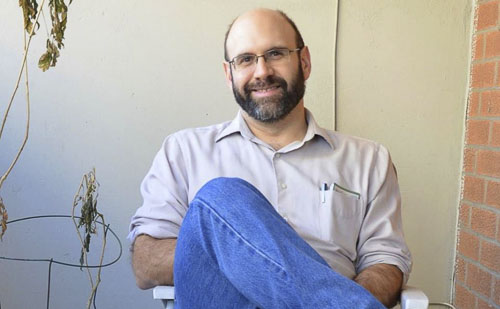 Author photo by Mark Raynes Roberts
Author photo by Mark Raynes Roberts


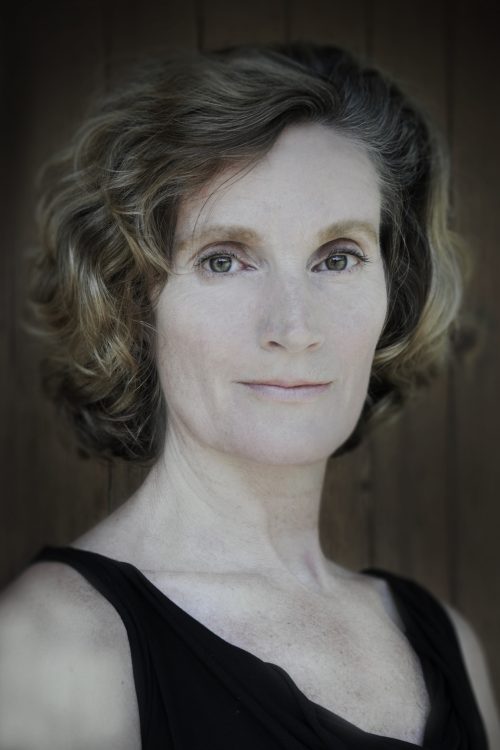


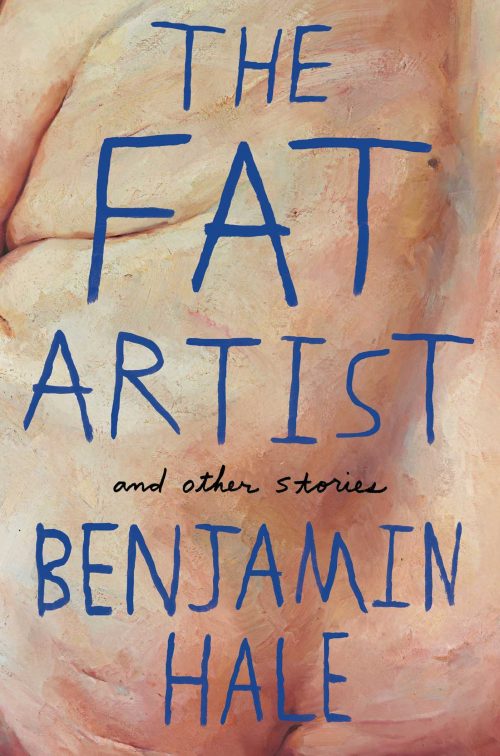

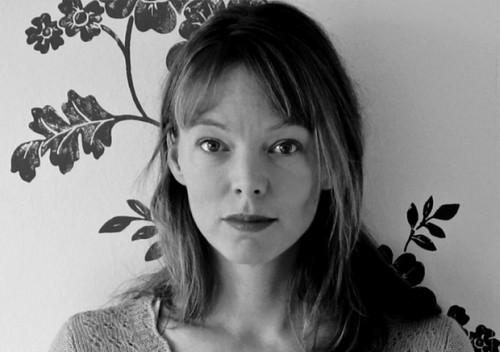
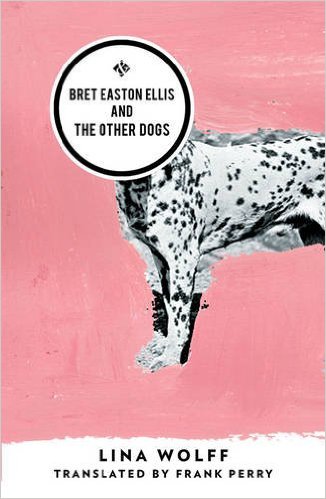

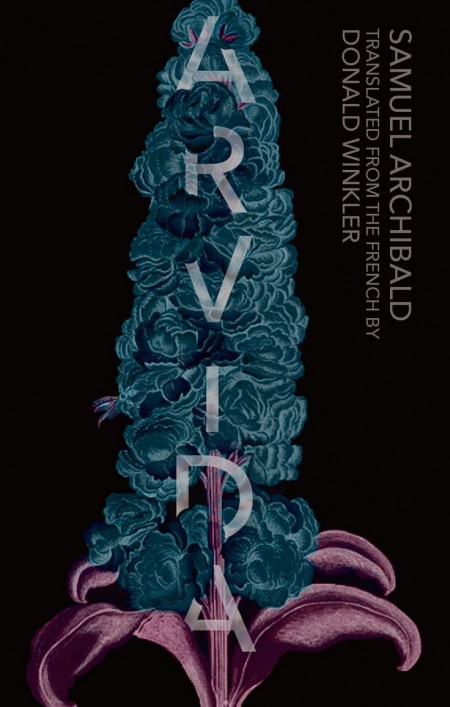

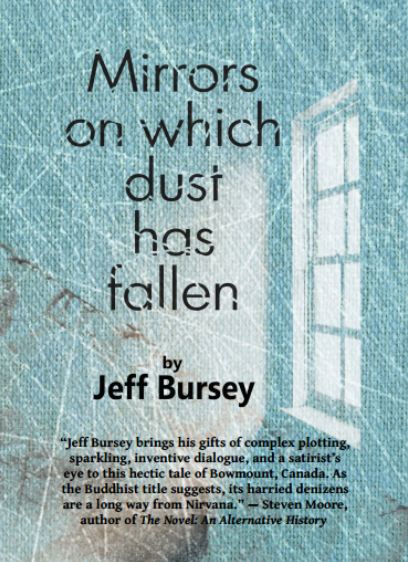

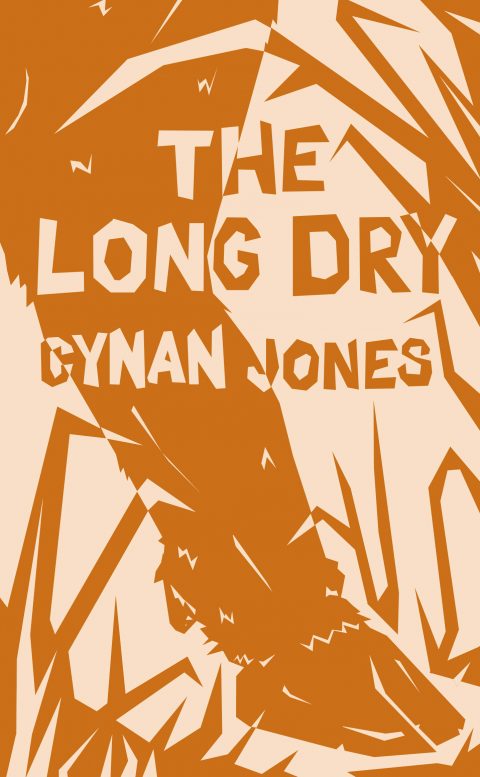





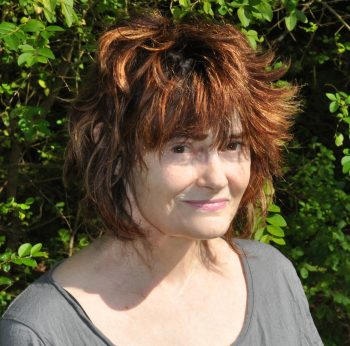



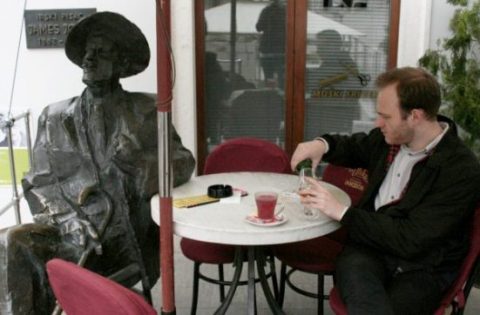








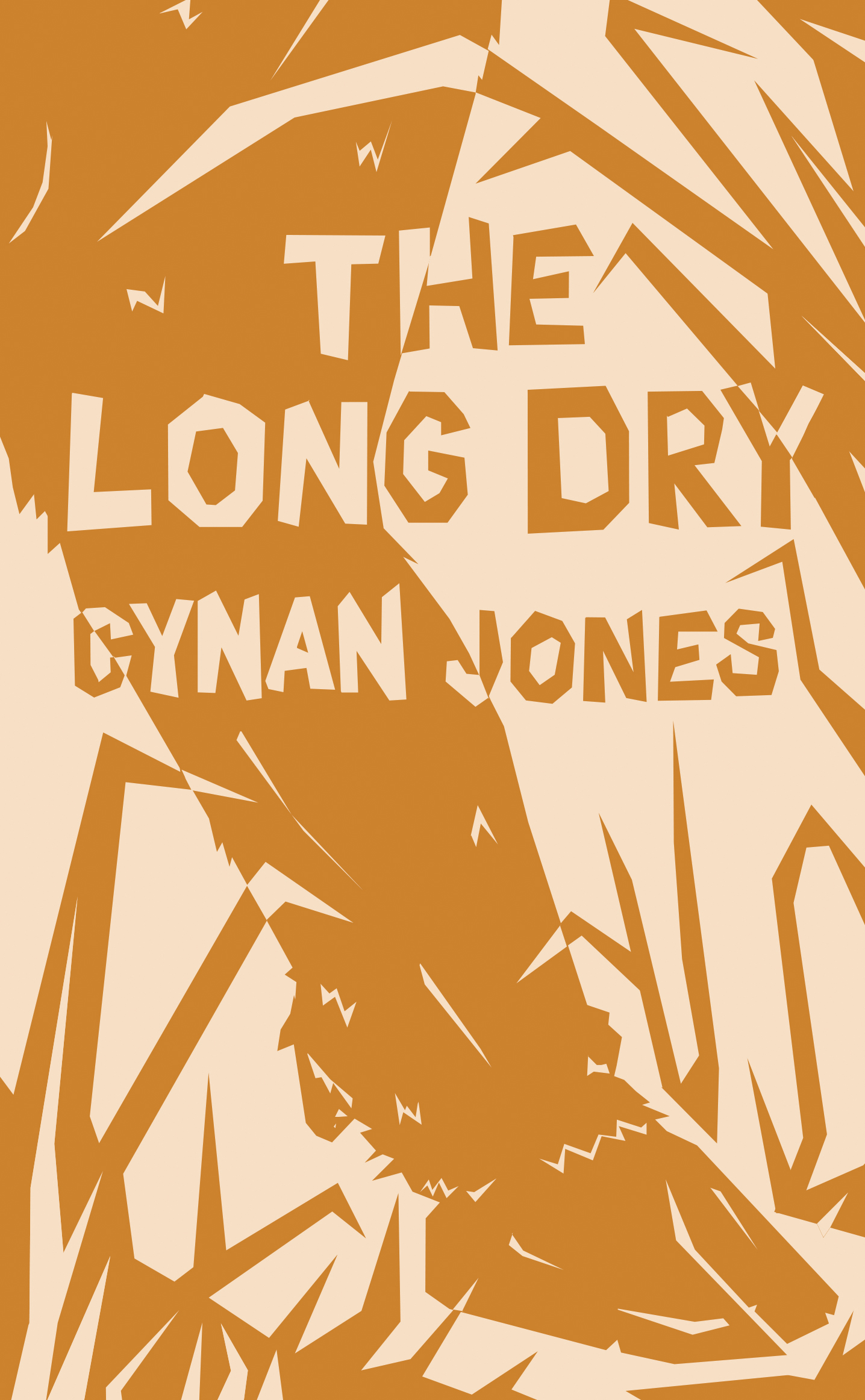
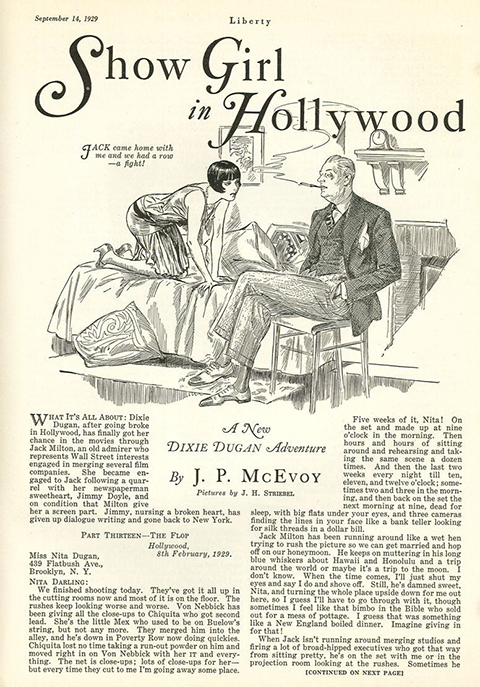




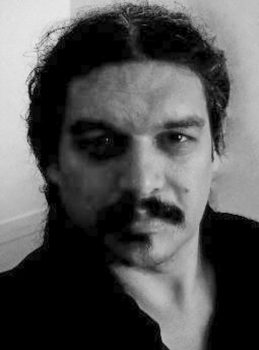

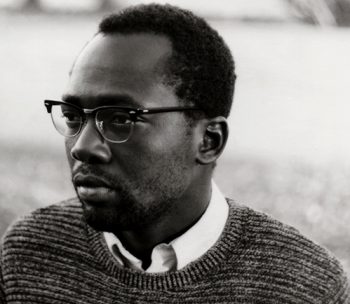

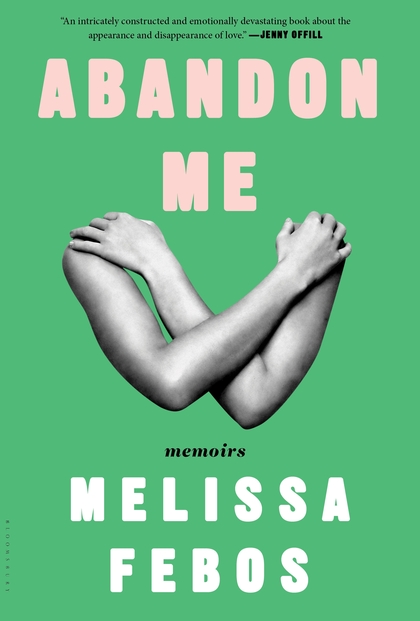


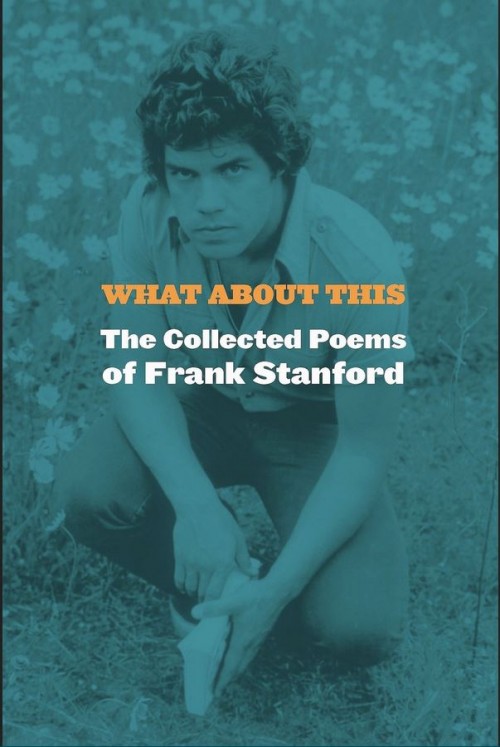


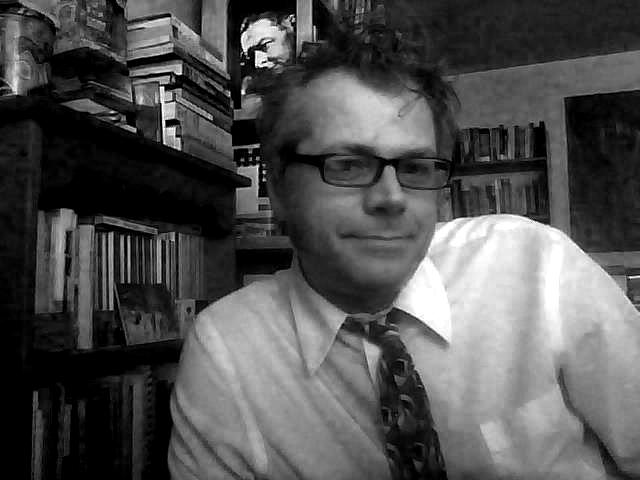







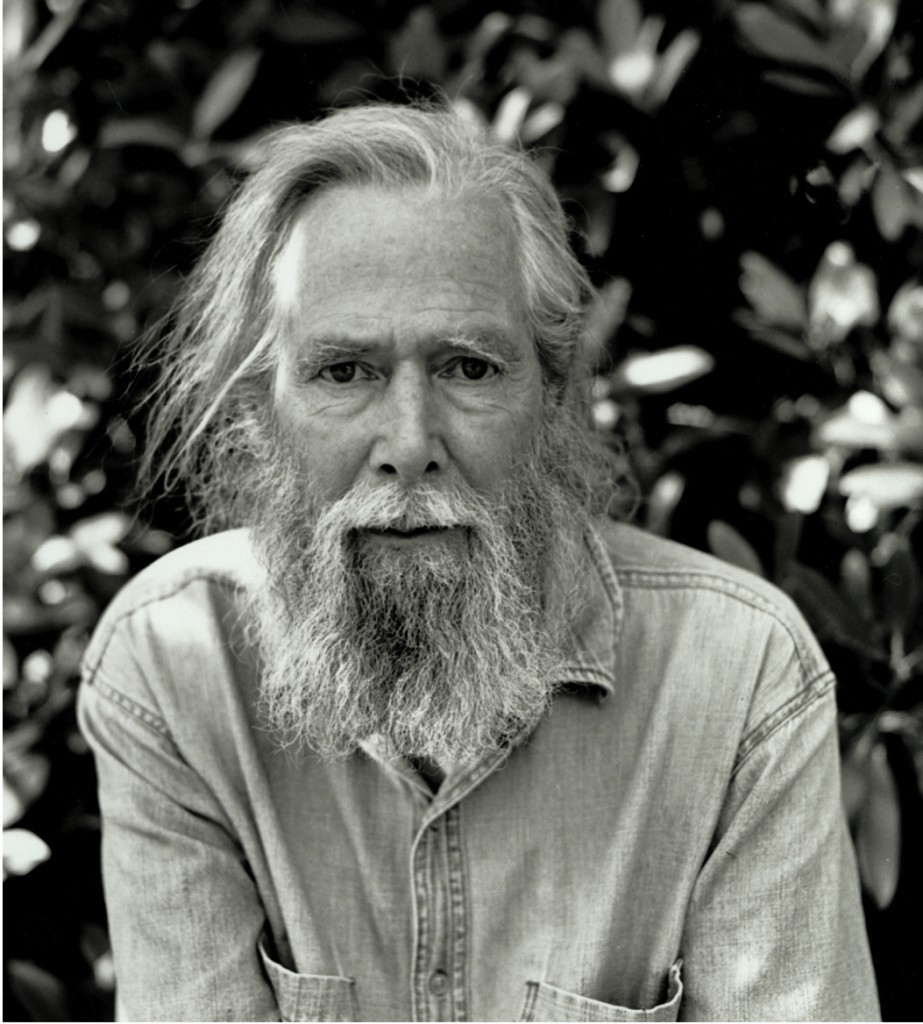
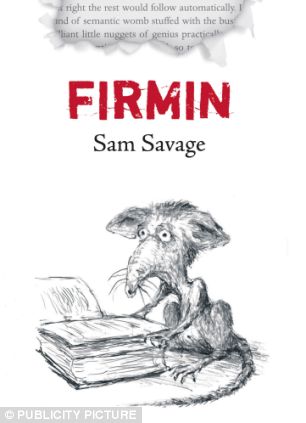
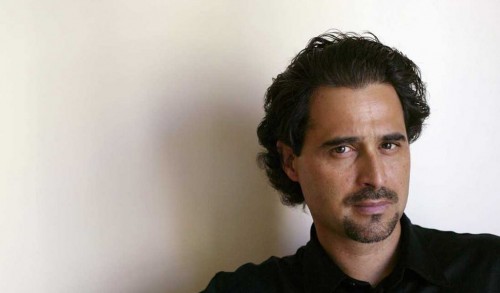
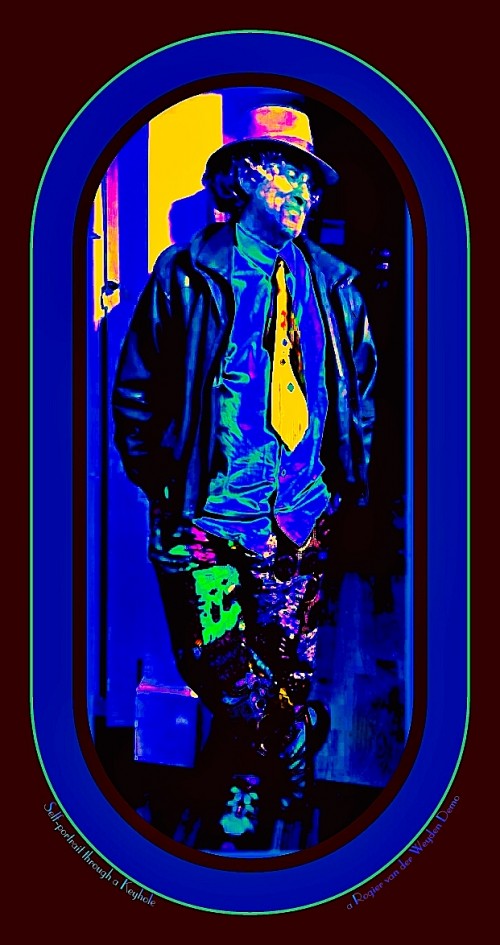
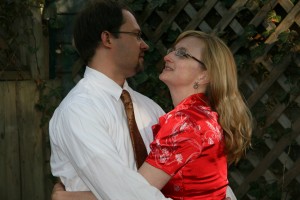 Michael and Kate
Michael and Kate


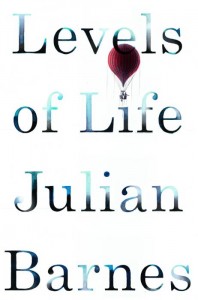


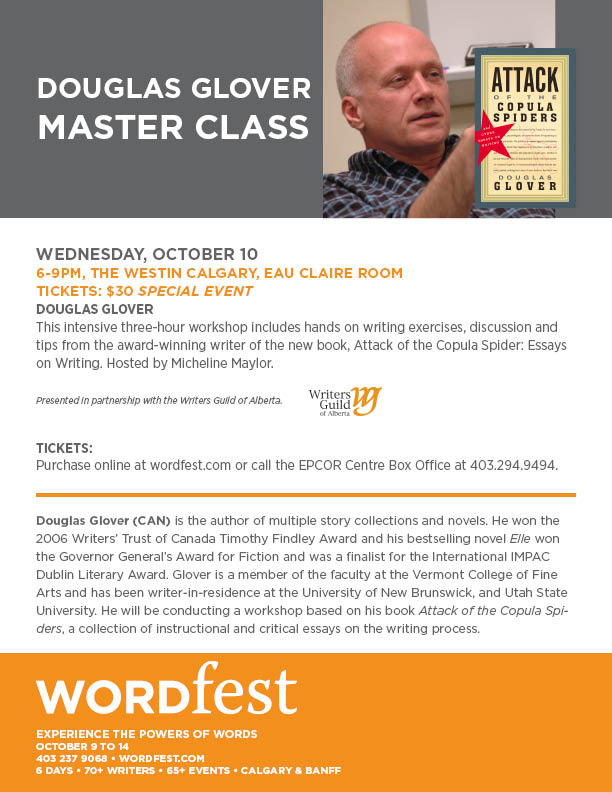

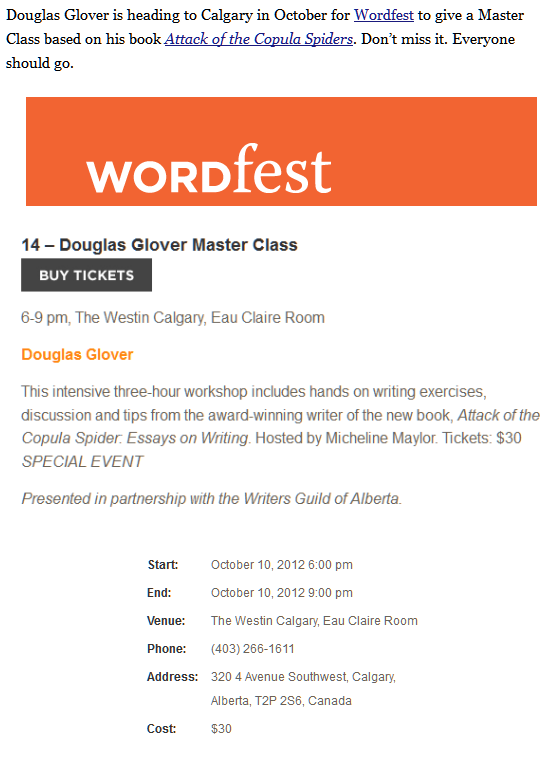
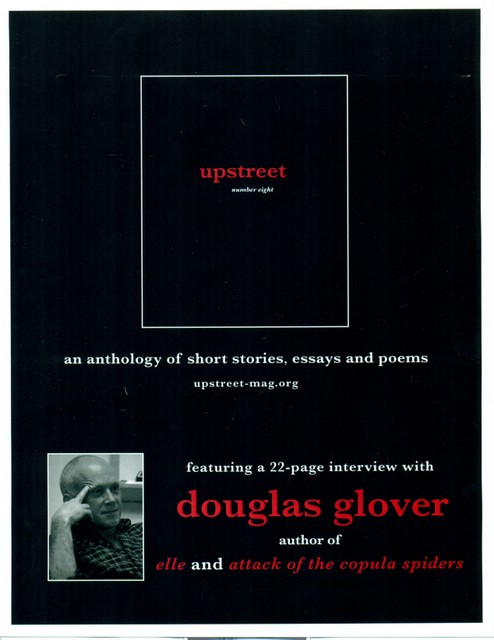
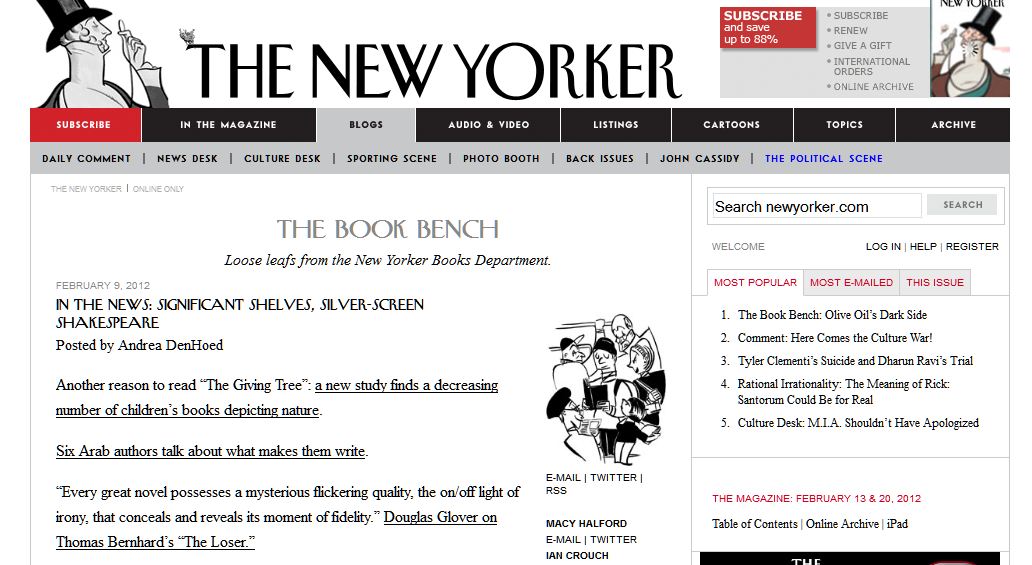

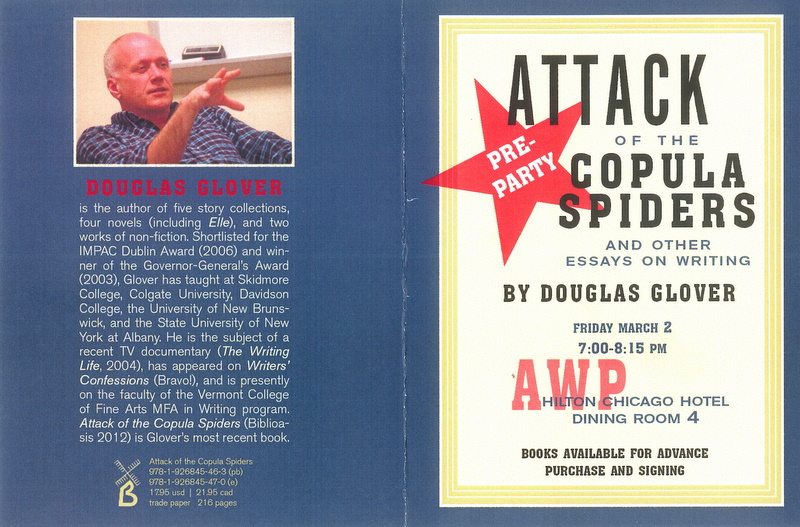
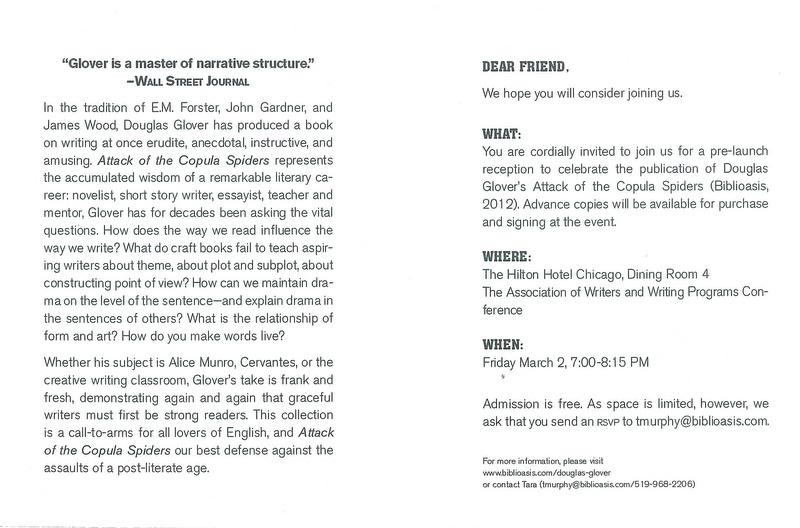


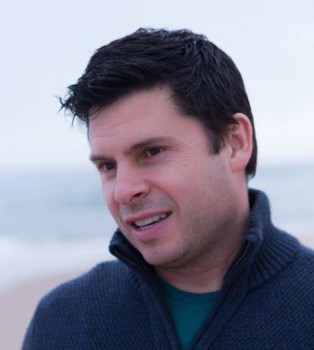





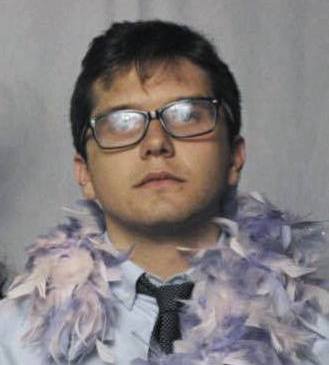

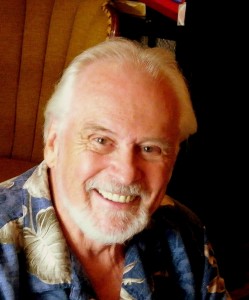


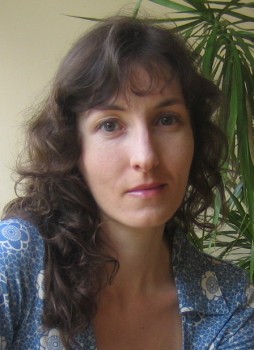


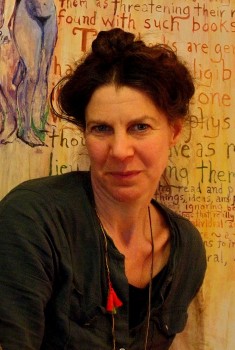


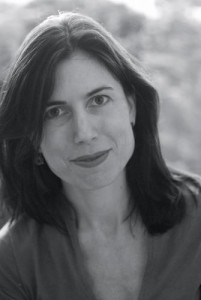

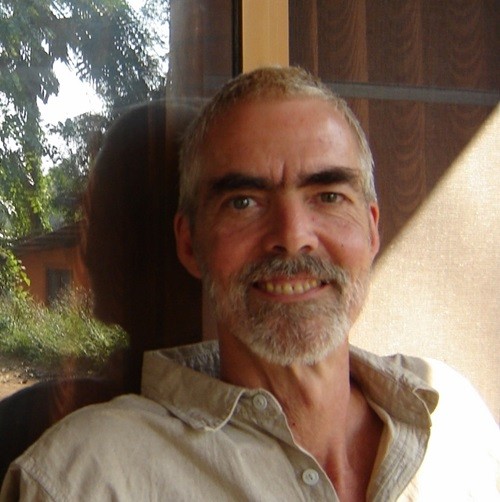





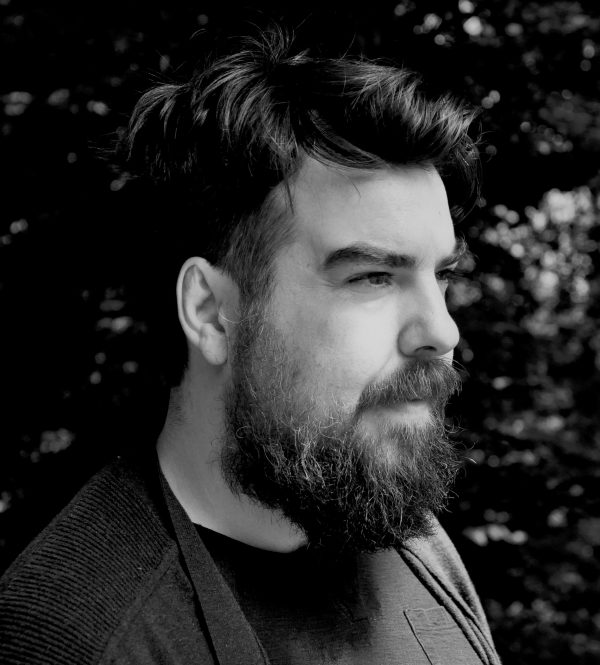



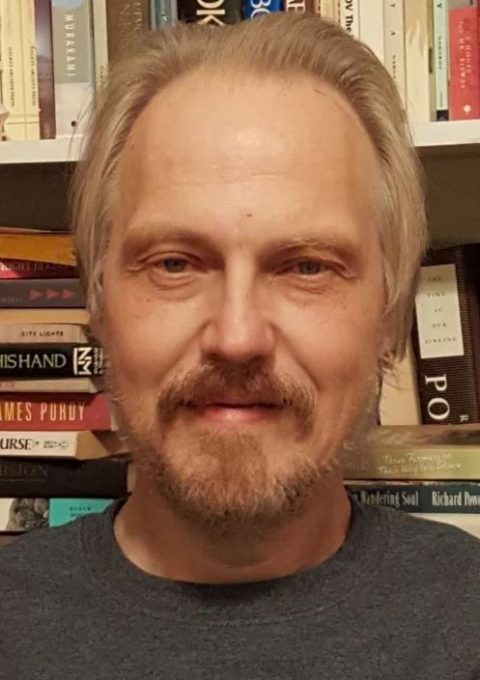
 A gallerist in Saratoga Springs for over 15 years, visual artist & poet
A gallerist in Saratoga Springs for over 15 years, visual artist & poet 
 Patrick O’Reilly was raised in Renews, Newfoundland and Labrador, the son of a mechanic and a shop’s clerk. He just graduated from St. Thomas University, Fredericton, New Brunswick, and will begin work on an MFA at the University of Saskatchewan this coming fall. Twice he has won the Robert Clayton Casto Prize for Poetry, the judges describing his poetry as “appealingly direct and unadorned.”
Patrick O’Reilly was raised in Renews, Newfoundland and Labrador, the son of a mechanic and a shop’s clerk. He just graduated from St. Thomas University, Fredericton, New Brunswick, and will begin work on an MFA at the University of Saskatchewan this coming fall. Twice he has won the Robert Clayton Casto Prize for Poetry, the judges describing his poetry as “appealingly direct and unadorned.”
 Mark Sampson has published two novels – Off Book (Norwood Publishing, 2007) and Sad Peninsula (Dundurn Press, 2014) – and a short story collection, called The Secrets Men Keep (Now or Never Publishing, 2015). He also has a book of poetry, Weathervane, forthcoming from Palimpsest Press in 2016. His stories, poems, essays and book reviews have appeared widely in journals in Canada and the United States. Mark holds a journalism degree from the University of King’s College in Halifax and a master’s degree in English from the University of Manitoba in Winnipeg. Originally from Prince Edward Island, he now lives and writes in Toronto.
Mark Sampson has published two novels – Off Book (Norwood Publishing, 2007) and Sad Peninsula (Dundurn Press, 2014) – and a short story collection, called The Secrets Men Keep (Now or Never Publishing, 2015). He also has a book of poetry, Weathervane, forthcoming from Palimpsest Press in 2016. His stories, poems, essays and book reviews have appeared widely in journals in Canada and the United States. Mark holds a journalism degree from the University of King’s College in Halifax and a master’s degree in English from the University of Manitoba in Winnipeg. Originally from Prince Edward Island, he now lives and writes in Toronto.



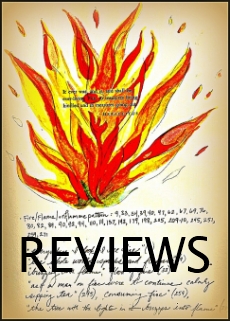
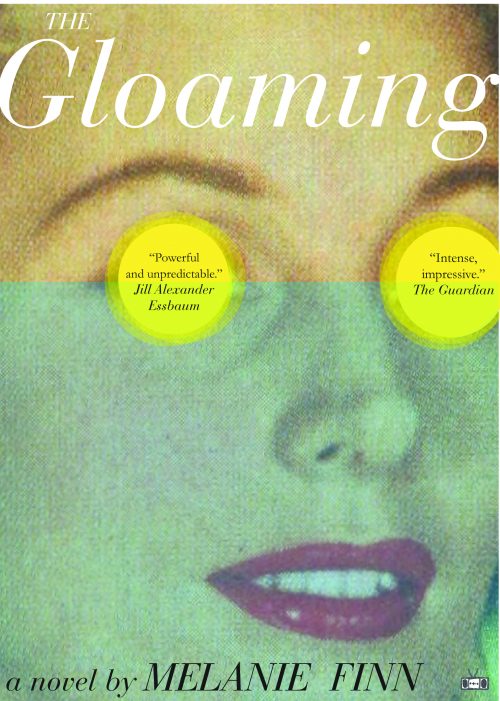
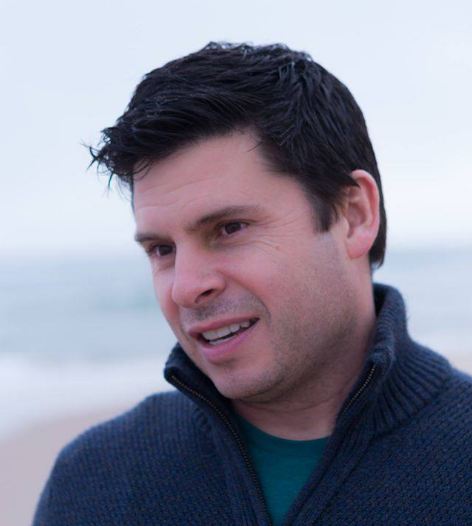
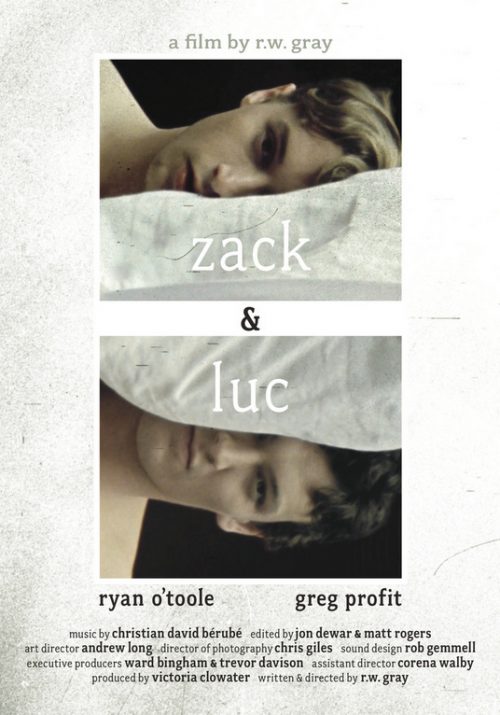
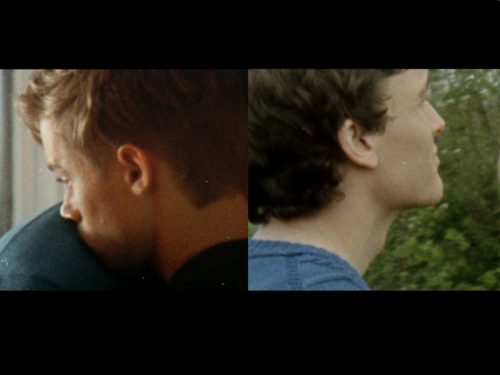
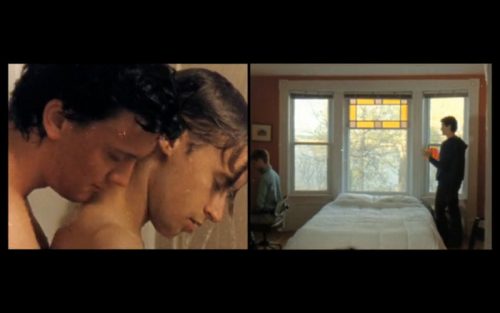
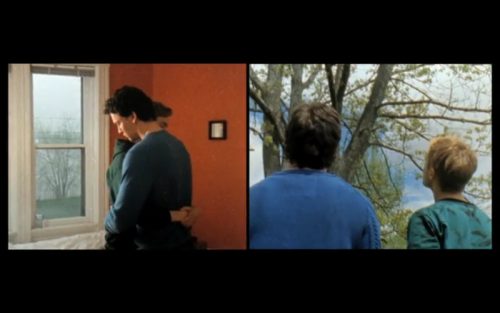
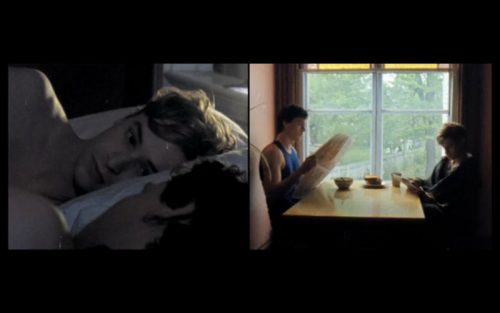
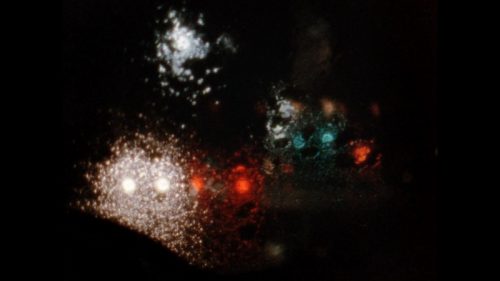

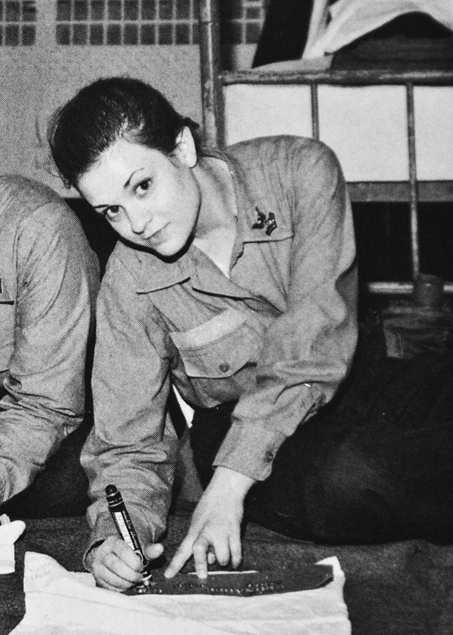



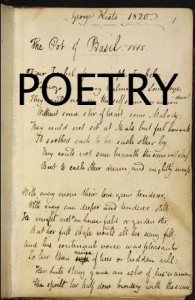 .
.